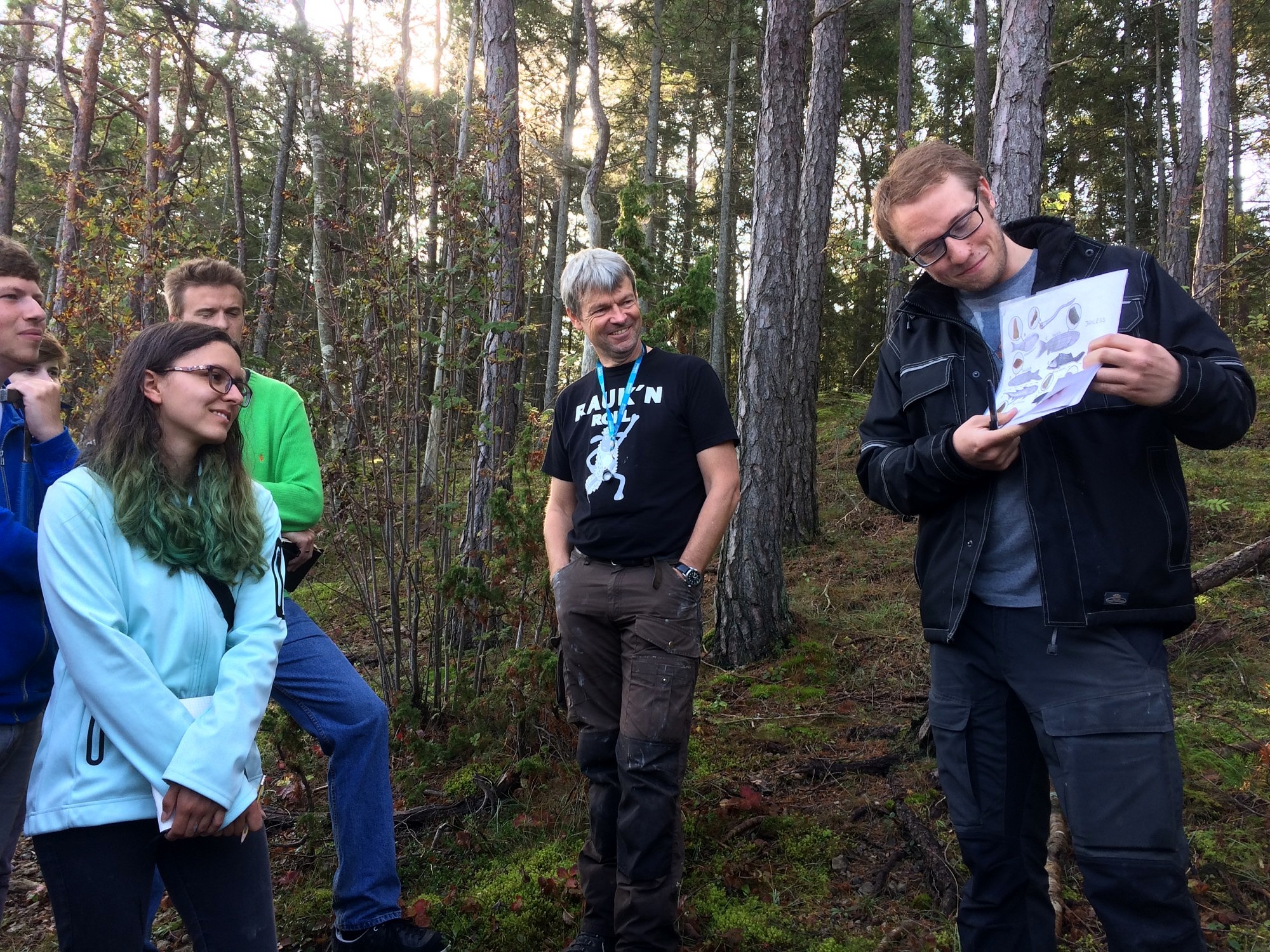Geowissenschaftliches Kolloquium
Early fishes, old bones
Ein Vortrag von Dr. Oskar Bremer
Department of Organismal Biology, Uppsala University
The majority of vertebrates today are represented by those with jaws (gnathostomes) including chondrichthyans (sharks, rays, and ratfishes) and osteichthyans (bony fishes and tetrapods), while jawless vertebrates are only represented by the cyclostomes (hagfishes and lampreys). This division was largely established in the Devonian Period (419–359 mya), often called the “Age of Fishes”, when gnathostomes increased in abundance and diversified to fill a wide variety of trophic roles. In the preceding Silurian Period (444–419 mya), the vertebrate faunas were dominated by a range of jawless, often armored vertebrates collectively termed “ostracoderms”. However, the already diverse Devonian gnathostomes, as well as Silurian body fossils and fragmentary remains of gnathostome affinity from older rocks, hint at a cryptic evolutionary history. Fragmentary and disarticulated material is more readily found in the fossil record compared to body fossils, and can therefore complement our understanding of the distribution and diversification patterns of early vertebrates.
The Swedish island of Gotland is almost entirely built up by sedimentary rocks of Silurian age, and the majority of the sequence has produced vertebrate remains. These rocks were initially formed in a warm and shallow sea called the Baltic Basin when Gotland was positioned close to the equator. Previous studies on disarticulated vertebrate material in East Baltic sections demonstrated an increasing importance of gnathostomes in the vertebrate faunas toward the latter part of the Silurian, following limited distributions and low diversities in the lower Silurian fossil record. This early diversification can also be seen in the Gotland sequence and includes acanthodians and stem osteichthyan taxa, such as Andreolepis hedei. Furthermore, upper Silurian remains of the enigmatic Tylodus deltoides from Estonia may provide an example of early feeding specializations among gnathostomes.
Isolated material can also provide much information about the evolution of different hard tissues and their development. Today, vertebrates are represented by gnathostomes with a fully mineralized skeleton and the cyclostomes that only have unmineralized cartilage elements. The extinct “ostracoderms” form an intermediate array that provide insights into the evolutionary assembly of the vertebrate mineralized skeleton. My upcoming studies will investigate the composition and development of hard tissues in a group called osteostracans, which is generally considered the sister group to gnathostomes. Three-dimensional modelling of high resolution, synchrotron microtomography data has already revised some previous interpretations, and further investigations can hopefully give insights into the evolution of hard tissues within the group and how this relates to gnathostomes.
Montag, 29.01.2018, 17:15, Hörsaal Geologie

